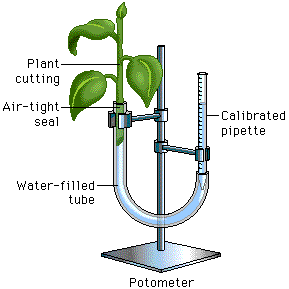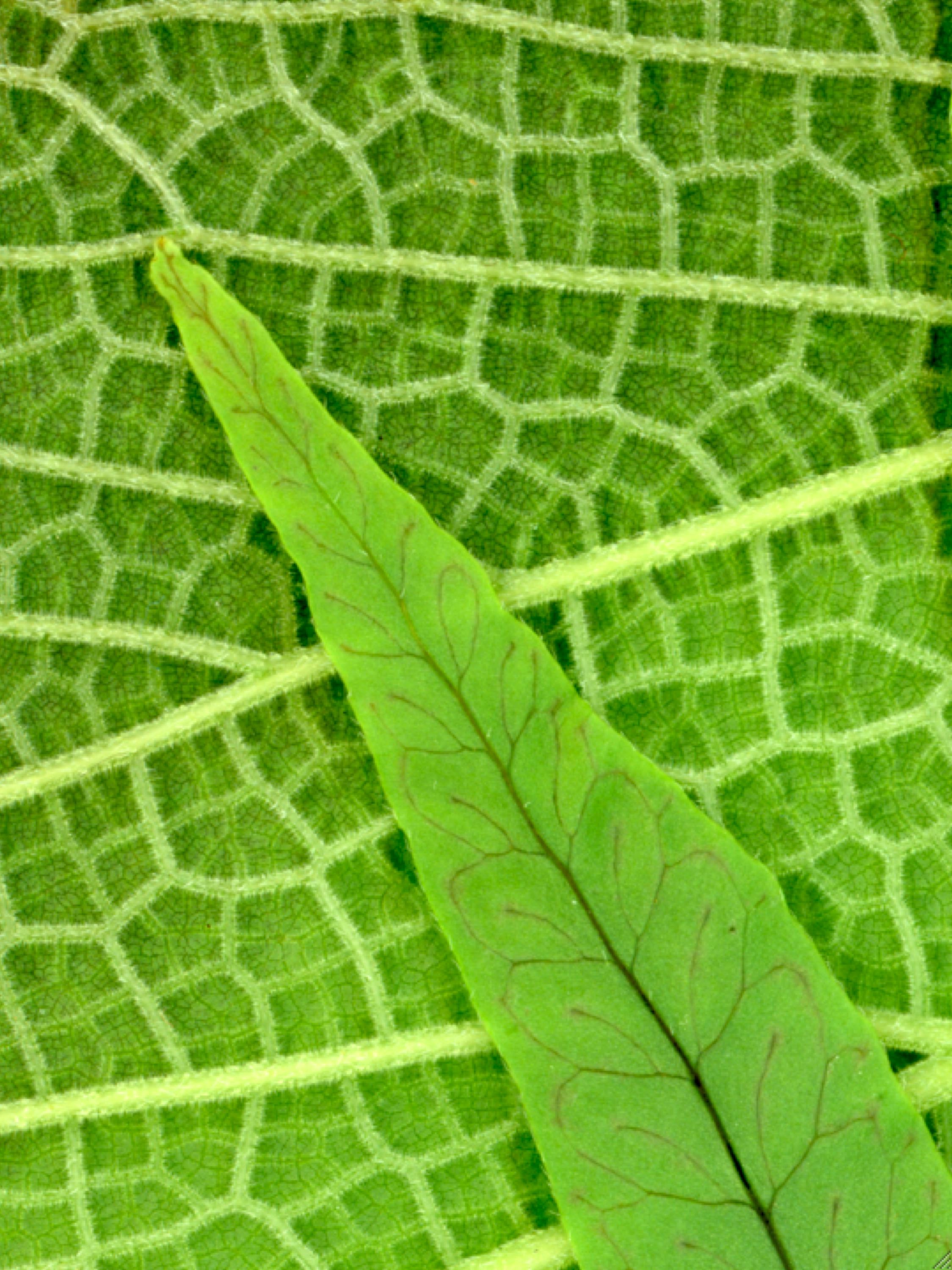One of our first-year bio labs sees our students using potometers to determine how transpiration is affected by things like light, humidity, & wind movement. Those of my readers who are school students may well have done something similar, but for those who arent – a potometer allows you to measure the rate of water uptake by a leafy shoot.
As the plant takes up water, the level of water in the pipette falls, & so students can measure changes in water uptake over time. (This is assumed to equal the rate at which water is lost to the atmosphere – by transpiration – although a small fraction will actually be used in photosynthesis.) They also calculate the leaf surface area of their shoot, so that they can work out water loss in mL/min/m2 – & then we get them to scale it up & think about what this would look like in terms of L/ha/day. Turns out to be rather a lot.
Just how much was brought home to me when I read a recent Nature article by David Beerling & Peter Franks (2010). (Beerling is the author of The Emerald Planet, which is a great exposition of the impact of plants on the history of life on Earth.) It turns out that land plants put 32 thousand billion tonnes of water vapour into the atmosphere each year – this is ‘double the total amount of water vapour in the atmosphere’ (if that sounds strange, remember that water is constantly added to & removed from the atmosphere during the water cycle). In other words, transpiration by land plants plays a significant role in the global water cycle.
Flowering plants (also known as angiosperms, or anthophyta) have the highest transpiration rates of any plants. They are able to support this because they have a complex leaf structure that includes a network of veins distributing water to the leaf cells doing the photosynthesising. This means that angiosperm leaves have better ‘hydraulic conductance’ (ie they’re better at getting water to the leaf cells) than, say, gymnosperms or ferns, but Beerling & Franks point out that this comes at a cost to the plant because the water-conducting internal plumbing tissues are rather expensive to manufacture. They ask ‘why evolution apparently drove the selection of leaves with a capacity for higher transpiration rates despite a rising carbon penalty for construction.’
The demands of transpiration and gas exchange demand something of a balancing act from plants. Plants take in CO2 for photosynthesis through stomata: tiny pores in the leaf surface, each controlled by a pair of ‘guard cells’. Transpirative water loss also occurs through the stomata. Flowering plants evolved at a time when levels of atmospheric CO2 were falling, & in these conditions leaves with high numbers of small stomata would have higher rates of photosynthesis than plants with fewer stomata. Plants with lots of stomata would maximise their CO2 uptake – but would also lose more water by transpiration. This meant that for maximum photosynthesis plants needed not only high numbers of stomata but also more highly reticulated veins in their leaves – Beerling & Franks describe this as a ‘hydraulic arms race’, driven by the availability of CO2 in the atmosphere.
I’ll be giving this paper to my students to read, when classes begin again after the Easter break. I’d like them to read The Emerald Planet as well, but we’ll start off small 🙂 And I’ll also recommend that they read this post about leaf venation on the Culturing Science blog. (So much good science blogging out there; I’m always stumbling across something new.)
D.J.Beerling & P.J.Franks (2010) The hidden cost of transpiration. Nature 464: 495-496


Grant says:
Ah. Transpiration experiments. Generations of students must have done these 🙂 I can remember doing this myself…!
I love that photo.